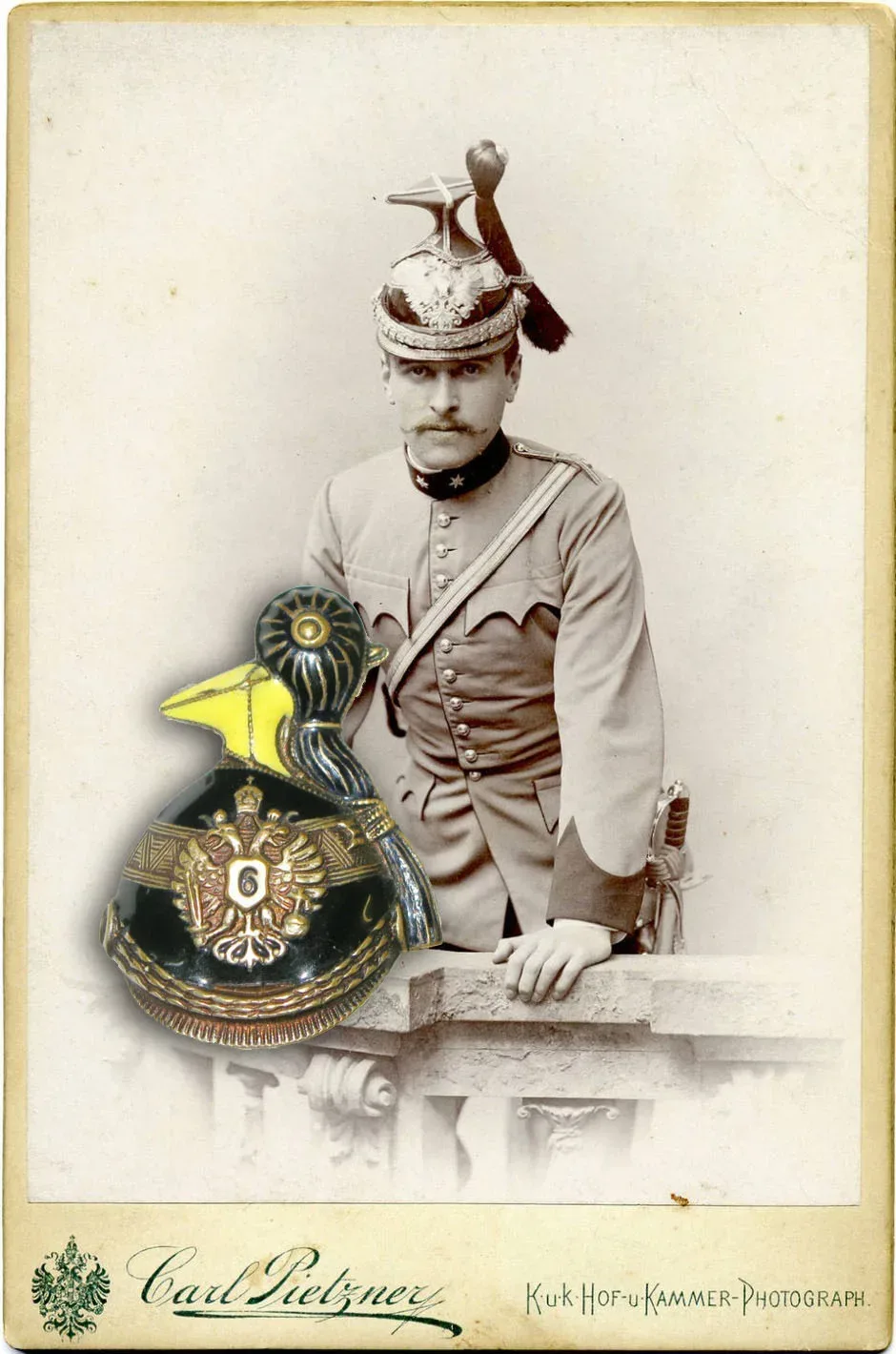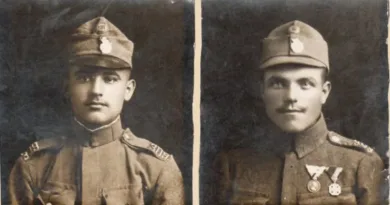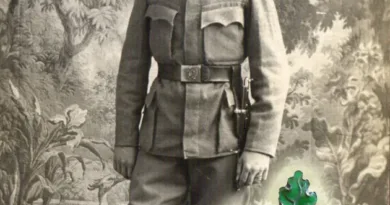Uhlans’ czapka
The word chapka means cap in both Polish and Russian. During the Great War, and even earlier, Polish cavalry headgear was called “czapka”. It was a cavalry headgear that ended in a square tile at the top. In its first versions, it appeared as a modified version of the hussar shako. The lower part of the cap and the visor was shako-like, it did not have the shape of a helmet. It was introduced in 1784 by the Austrian Uhlans, at the same time as the annexation of Galicia. It was also used in many other armies in Europe, where it spread during the Napoleonic Wars through Polish mediation. At that time, encouraged by the battlefield successes of the Polish uhlans, several countries organized this type of weapons. They all wore czapka. The helmet-like hard leather cap appeared during the 19th century. A retaining strap made of metal chain was also added.

At the beginning of the Great War, uhlans still wore the cap. A protective cover was often pulled over it when worn in the fields. From 1916, field wear was no longer typical, the cap became an accessory of the decorative uniform. The upper part of the Austro-Hungarian cap was fabricated in the color of the uhlan regiment, as can be seen in the attached photo. In the middle, the regiment’s number was visible in the middle of the coat of arms of the Monarchy.

The Arkanzas company produced a series of insignia modeled on the caps of the uhlan regiments, similarly to the caps of the hussar regiments. A total of 12 such types were made, numbered between 1-12. This is interesting because the Monarchy only had 10 uhlan regiments. The company also produced the insignia of the 9th and 10th regiments, despite the fact that these regiments did not exist during the Great War. Nevertheless, the uhlan czapkas are of course very beautiful badges, decorative pieces of many collections.





[…] wrote about lancer regiments already, also about their beautiful headgear (here). I am attaching a badge depicting a czapka to this post, but also another, a second badge of the […]